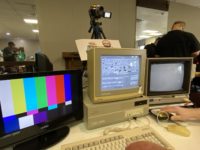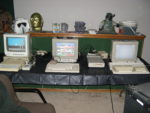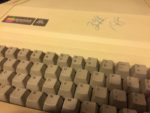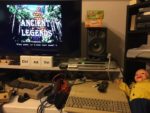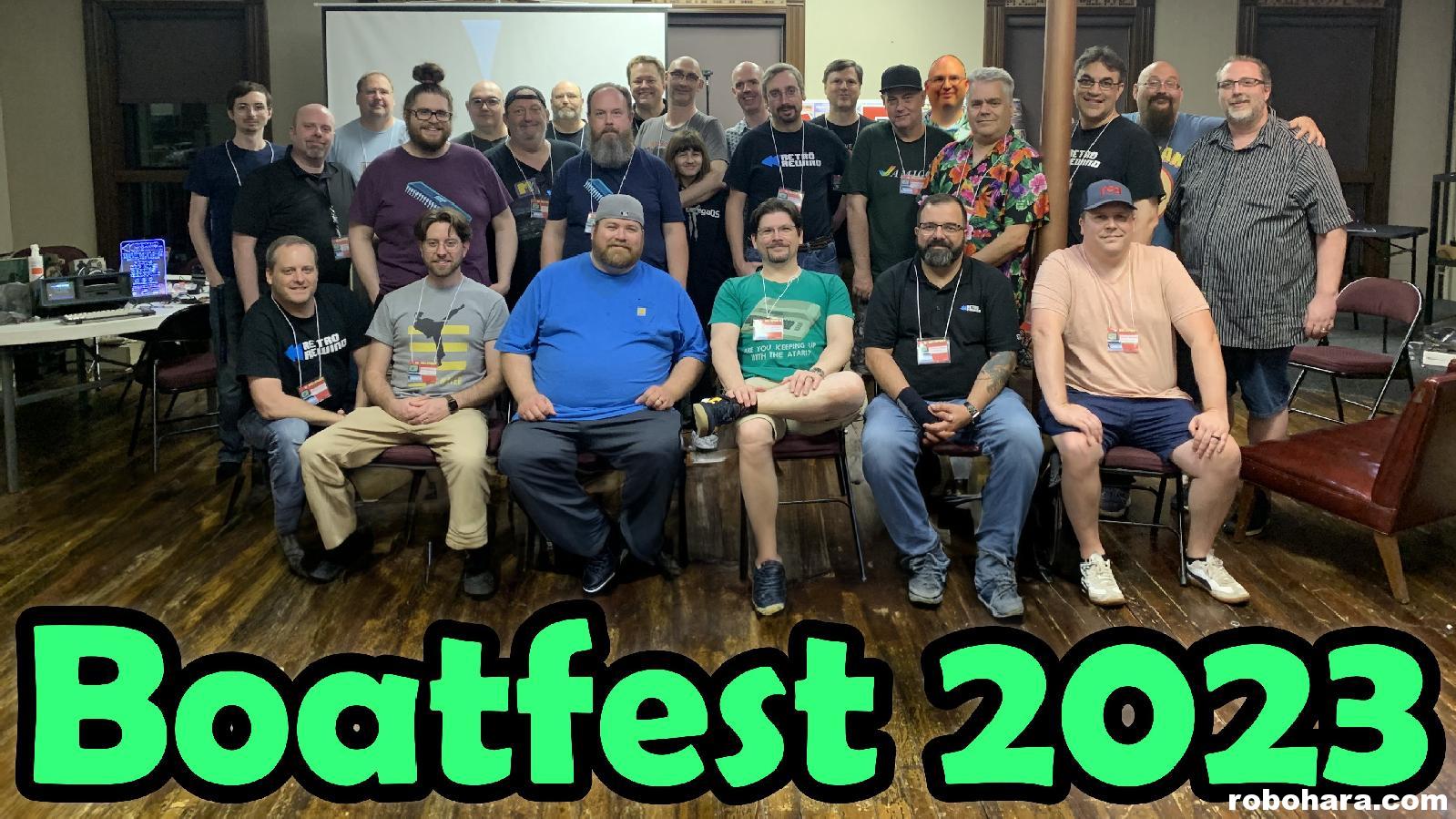
Last weekend I attended the second annual Boatfest gathering, which again took place in Hurricane, West Virginia. Despite its name, the event has nothing to do with boats — it’s a gathering of retrocomputing and retrogaming enthusiasts named after the organizer, John “Boat of Car” Shawler.
Boatfest is difficult to summarize because it’s different things to different people. Some people go to Boatfest to show off their vintage computers and gaming systems, while others go just to see them. It’s an event where old friends reconnect, and new friendships are made. There are tournaments, there are presentations, there are people repairing things, and this year there was even an auction. And the fun didn’t stop at the show, as the party moved to local restaurants each evening. At its core, Boatfest was simply fifty people meeting in a single location to have fun.
This year’s Boatfest took place in the Copper Room, an event space located above a Connolly’s, an Irish Pub… that recently went out of business. Fortunately, Boat was able to work a deal and maintain use of the space. The room was twice as large as last year’s space, with a capacity of approximately 50 people. A series of round tables were available for attendees to set up their vintage equipment. In the front of the room, couches and chairs faced a makeshift presentation area complete with cameras, microphones, and a projector screen. More tables, filled with items for the auction and things for sale, lined one of the walls. There was also a large chest-style refrigerator full of drinks, a restroom, and a kitchen area. With the addition of a few extension cords and power strips, the room was ready for business.
Several people associated with show are involved in podcasts, many of whom performed live shows in front of the attendees. Boat, the event’s organizer, is one of the hosts of the Amigos Podcast, a show about Amiga computers. Boat’s podcasting partner, Amigo Aaron, does another show with his brother, The Brent, called ARG Presents. Both of those shows did live performances, and I did one as well for Sprite Castle, covering the 1986 game Friday the 13th. There were also a couple of Jeopardy-style trivia challenges, but in between those events it was all about the gaming and checking out each other’s tables. My time was spent pretty evenly between demonstrating the things I brought, and checking out everyone else’s goods.
For my part, I brought two computers. First was an Apple IIe with a CFFA-3000 card installed that allows users to load games and programs via a USB stick. I also brought my old Commodore SX-64, which was a portable version of the Commodore 64 (complete with a 5″ color screen). Boatfest is a place where terms like “rare” are relative. Approximately 9,000 SX-64s were originally sold back in the mid 1980s. Of those, of course, many have since died. It’s a nearly 40-year-old computer that cost $1,000 in 1984 and was relatively obscure even when it was new… and there were four of them in the room.
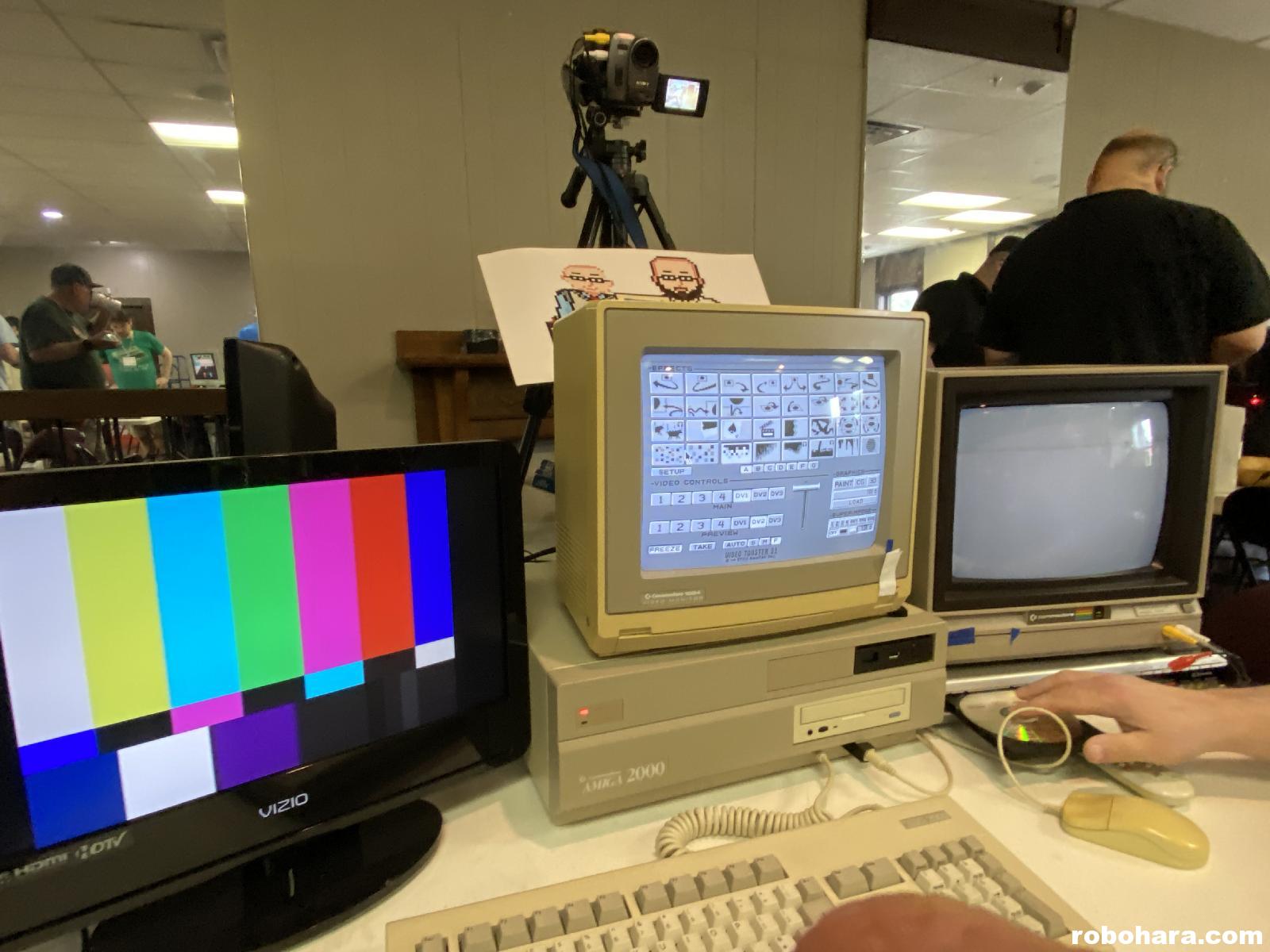
There were so many neat systems on display that it would be impossible for me to list them all. One of my favorite displays was a working Video Toaster running on an Amiga 2000. The Video Toaster was a video editing suite that could be used for video production. It’s a legendary piece of equipment which I have heard about for decades but never actually saw in person. At Boatfest I was able to sit down in front of one, play with it for nearly an hour, and walk away with a DVD-R copy of the experience. All over the room people were having similar experiences, whether they had stumbled across some holy grail from their past or discovered something new for the first time.
Building off of last year’s swap table event, in 2023 Boatfest held an actual auction. Attendees were encouraged to bring items from home, set a reserve, and let ‘er rip. The Brent did a fine job of running the auction, and I had about a dozen entries for sale. I tried to keep things interesting by putting both some low and high dollar items up for sale. For example, I brought five 10-packs of NES cartridges that I listed for $1/game. On the other end of the spectrum, I decided to sell my NTSC Amiga CD32. It is a rare variant of a rare console that ended up selling for $475. The buyer was happy with the price and I was happy to pass it along to someone else to enjoy. I have such a hard time parting with things, and knowing they’re going to someone who will appreciate them as much as I did makes it a little easier. Some of the items in the auction sold much higher than I was expecting, while others went surprisingly low. I didn’t talk to every buyer and seller so I can only speak for myself when I say I thought everything with amazingly smooth and I was more than pleased with what my items sold for.
There was always something happening at Boatfest. In the front corner of the room, Frank and Jason from Retro Rewind were busy soldering on people’s broken machines, doing their part to keep these old computers operational. In the rear of the room, PacBilly and his brother had organized an Astro Duel Deluxe tournament, which had four people at a time shooting each other’s spaceships. There were two separate Jeopardy-style trivia contests that took place. I competed in the first and took second place with -100 points. On the second game, I knew like seven answers in a row — sometimes it’s the luck of the draw! But in addition to all these activities, conversations were happening non-stop, and everyone was always approachable. There were many times I found myself walking up to a conversation in progress and joining in — and, just as often, there were times I was talking to someone and suddenly three or four people had gathered around. There wasn’t a single person at the show who was stand-offish or negative.

At Boatfest 2022 attendees were on their own for meal arrangements, and even though it was never really a problem, each time I skipped out to grab sometime to eat I felt like I was missing part of the show. In 2023, this was rectified by shutting down the show each evening for 90 minutes and inviting everyone in attendance to a local restaurant. This worked out great for multiple reasons. Not only were attendees able to sit down and eat without worrying about missing any part of the show, but it was nice to get away from the noise for a bit and reset. Each night I ended up sitting by different people and had some great conversations. Plus, Hurricane, West Virginia has a surprisingly number of great restaurants!
Traditionally the Sunday after the show is spent visiting local locations and winding down. Unfortunately for my buddy Jeff and I, the beds in our rental RV weren’t as comfortable as we had hoped and so we made a command decision to hit the road back home Sunday morning. We took turns driving and made a few stops to stretch, but ended up driving all 990 miles back home on Sunday. It was a long day on the road, but sleeping in my own bed was 100% worth it.
Both Jeff and I had a blast at the show, and I haven’t heard that anyone didn’t have a great time. If there’s a Boatfest 2024, I’ll definitely be there… although probably not in an RV next year. ;)
My Boatfest 2023 Photo Gallery: LINK

